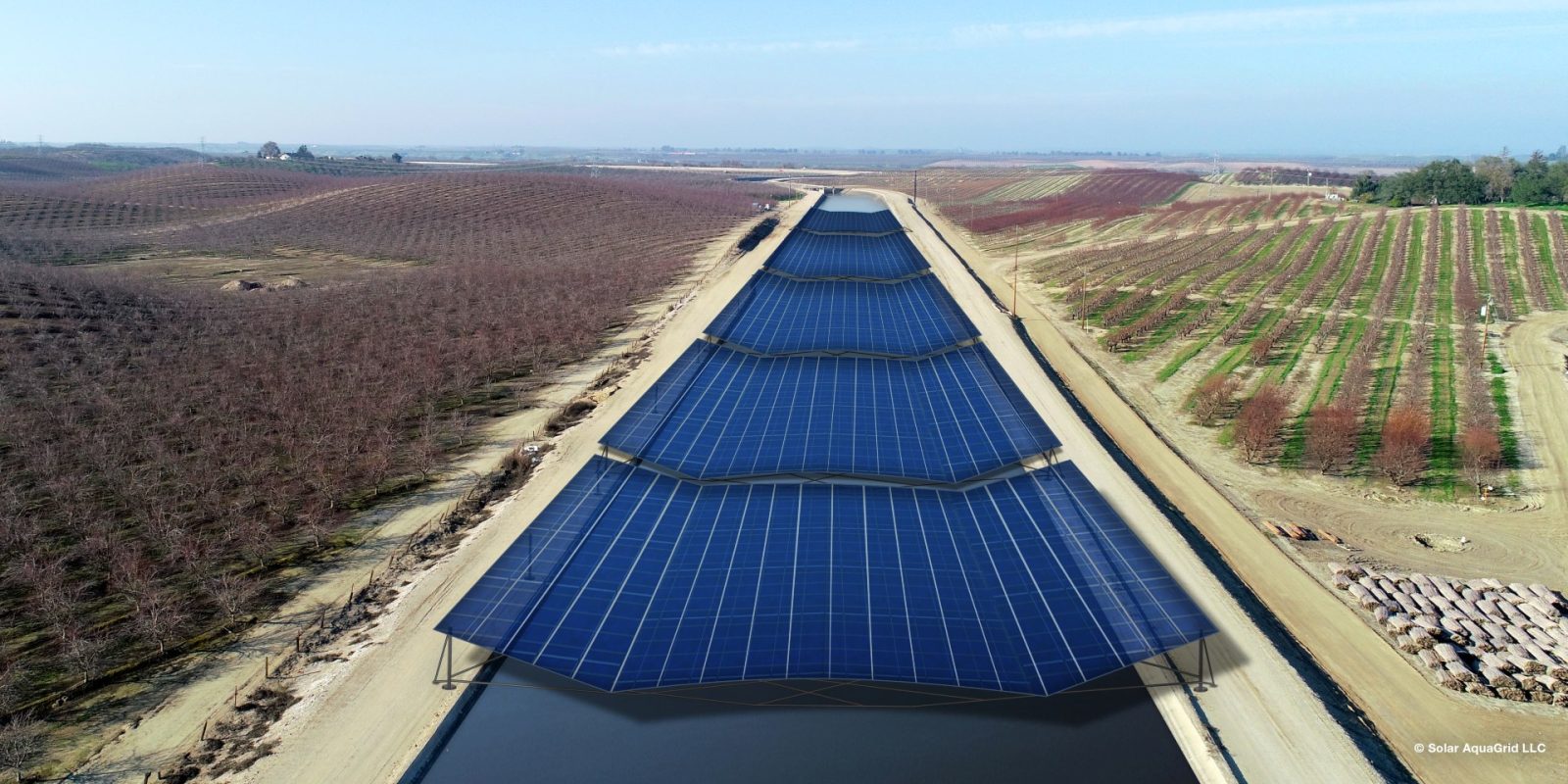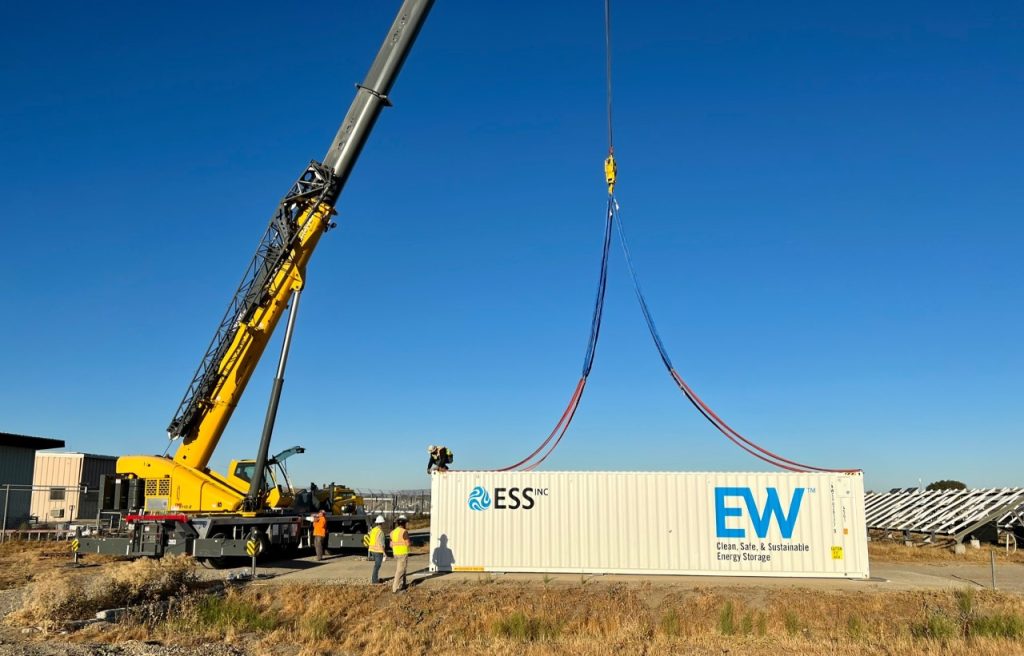
The first US pilot that will site solar panels over irrigation canals is going to deploy long-duration iron flow battery storage.
Solar panels over canals
Project Nexus is a $20 million pilot in California’s Turlock Irrigation District that launched in October of last year. The project team is exploring solar over canal design, deployment, and co-benefits using canal infrastructure and the electrical grid.
India already has solar panels over canals, but Project Nexus is the first of its kind in the US.
The Turlock Irrigation District was the first irrigation district formed in California in 1887. It provides irrigation water to 4,700 growers who farm around 150,000 acres in the San Joaquin Valley.
About 8,500 feet of solar panels will be built over three sections of Turlock Irrigation District’s canals. The three sections feature areas of various orientations and canal widths that range from 20 to 100 feet wide.
Project Nexus will explore whether the solar panels reduce water evaporation as a result of midday shade and wind mitigation; create improvements to water quality through reduced vegetative growth; reduce canal maintenance as a result of reduced vegetative growth; and of course, generate renewable electricity.
The California Department of Water Resources, utility company Turlock Irrigation District, Marin County, California-based water and energy project developer Solar AquaGrid, and The University of California, Merced, are partnering on the pilot.
Iron flow battery storage
Long-term iron flow battery storage is now going to be added to Project Nexus; Wilsonville, Oregon-based long-duration iron flow battery maker ESS is going to supply two 75kW turnkey “Energy Warehouse” batteries.

ESS says that its technology was selected for its “inherently safe and non-toxic characteristics, making it preferable for siting adjacent to water infrastructure.” Its iron flow technology can provide up to 12 hours of flexible energy capacity. Iron flow chemistry doesn’t use critical minerals such as lithium or cobalt – it uses iron, salt, and water.
Hugh McDermott, ESS senior vice president, said:
Long-duration energy storage is the key that will enable Project Nexus to not only conserve water and generate renewable energy, but provide on-demand, clean power 24/7.
This project addresses multiple climate challenges at once and is the kind of innovative approach that will build a climate-resilient future.
If all 4,000 miles of California’s canals were covered with solar panels, that could produce 13 gigawatts of renewable power. A gigawatt is enough to power 750,000 homes, so that would be enough power for 9.75 million households. For perspective, as of July 2021, there were 13.1 million households in California.
Top comment by Carmayogi
I have a small holding in ESS. The stock has been mauled, but I truly believe in this tech. Sure, we need high energy density batteries as well, but this tech, with a replaceable electrolyte that's non-toxic sounds like a great idea for places where space isn't an issue, like the back (or roof) of any big box store.
The question is on price. If it can be cheap, then it's the default option in such cases.
Project Nexus is expected to be completed in 2024.
Read more: This solar + storage system is made up of 1,300 second-life EV batteries
Main photo: Project Nexus
UnderstandSolar is a free service that links you to top-rated solar installers in your region for personalized solar estimates. Tesla now offers price matching, so it’s important to shop for the best quotes. Click here to learn more and get your quotes. — *ad.
FTC: We use income earning auto affiliate links. More.






Comments